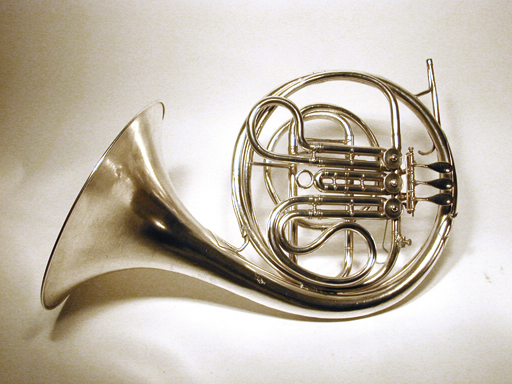
Click for larger image. |
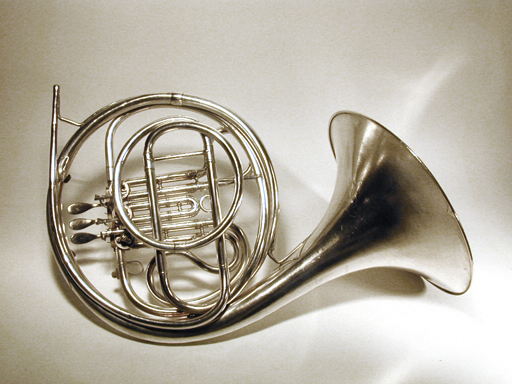
Click for larger image. |
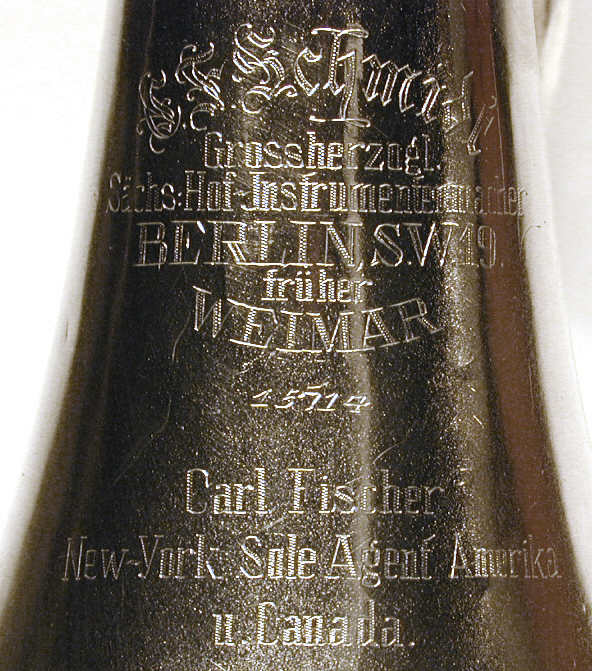
The title Groherzoglicher-Schsischer Hof-Musikinstrumentenmacher ("Grand-Ducal-Saxon Court Musical Instrument Maker") was bestowed on March 28, 1896 by the Office of the Court Marshall (Hofmarschallamt) in Weimar. |
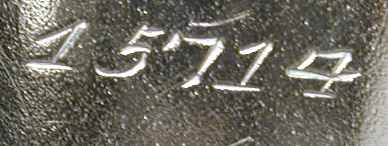
The U.S. importer, Carl Fischer, assigned serial numbers to the musical instruments it sold. Unfortunately there is no extant list of these numbers to assist in establishing a chronology. The number inscribed on this instrument is, however, the earliest by a substantial amount found on C.F. Schmidt horns. (See the table on an accompanying page.) |
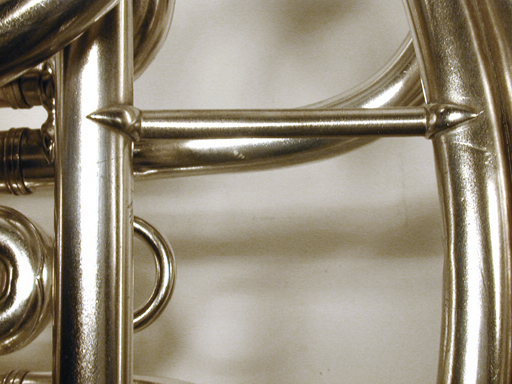
Click for larger image. Solder scars about a centimeter below both ends of this brace indicate that it has been moved after final cleanup of the horn. This is curious since there is no evidence of repair or that the tubing to which it is attached has been shifted. The only conclusion is that the brace had been shortened and repositioned after it was initially installed. (A similar shifting of a particular brace between the leadpipe and F tuning slide is also found on several C.F. Schmidt double horns.) There is some general brass instrument folklore that the location of bracing can affect vibrational stability of individual harmonics if they happen to fall on a node or antinode. Perhaps after this horn was finished and being tested at the factory, this brace was shifted to correct a faulty (or "wolf") note. |
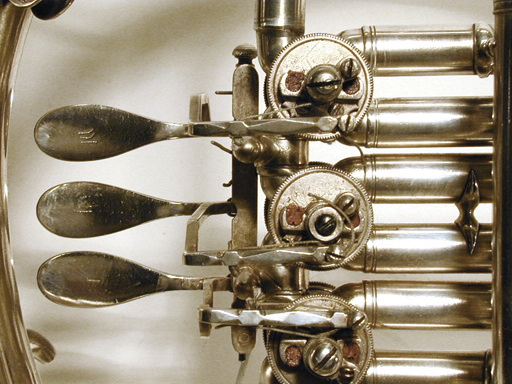
Click for larger image. Perhaps the most interesting feature of this horn is in the valve levers. Note that the finger plates are slightly convex. Also the connecting arms have sharp angle corners and some simple decorative bevelling. These details are not found on later C.F. Schmidt horns which might attest to this instrument's early manufacture. |